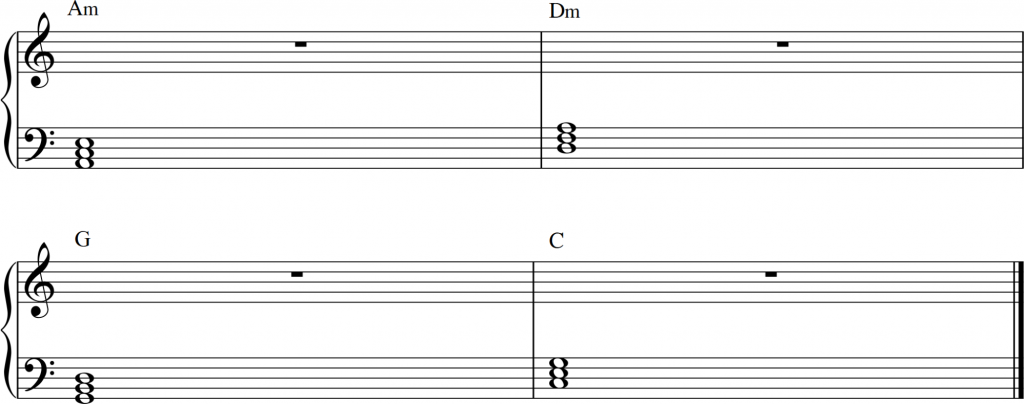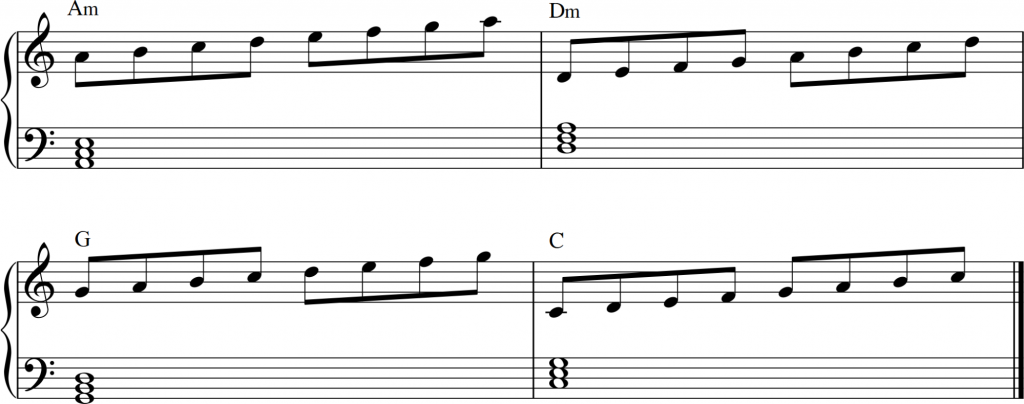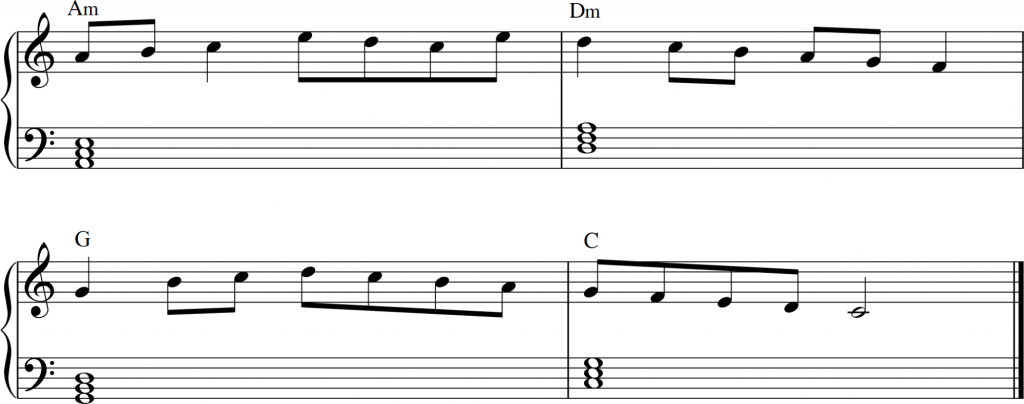Learning how to improvise on piano may seem intimidating at first. What notes should you begin with? What if it doesn’t sound good? What if I make a mistake? It can be scary to jump out and improvise – or make music spontaneously.
If you think about it, you are already improvising most of the day. You might wake up with a plan for going to the market before heading to work, but then something unexpected happens. What do you do? You can’t ignore it – you have to act! You have to improvise and learning improvisation in music on the piano is no different!

Some basic ingredients
In order to learn how to improvise on the piano, it is important to understand a few basic piano improvisation techniques. This way, you have some tools to work with and are not left grasping for straws and wondering what to do.
Scales
Having at least one scale under your fingers is extremely beneficial when learning improvisation in music, as this is where the notes of your first melodies will come from.
The easiest scale to learn on the piano is the C major scale. Check it out notated below:

The finger pattern for the right hand is 1 – 2 – 3 – 1 – 2 – 3 – 4 – 5 and the finger pattern for the left hand is 5 – 4 – 3 – 2 – 1 – 3 – 2 – 1. Practice both hands separately and slowly until you feel comfortable, then try with both hands.
Once you can comfortably play the C major scale, try to use the notes of the scale to create some basic melodies on the spot. This is the starting place for piano improvisation.
Triads
Understanding some basic triads is another key ingredient to learning piano improvisation for beginners. Triads are simple, three note chords (think tri-angle). Once you learn the C major scale, you will know 7 triads. Here they are notated below:

In the key of C major, there are 7 triads: C major, D minor, E minor, F major, G major, A minor, and B diminished. Practice playing these triads with the finger pattern 1 – 3 – 5 with your right hand and 5 – 3 – 1 with your left hand.
It is crucial when learning piano improvisation for beginners to always keep yourself curious and on the lookout for new sources of inspiration. Listen regularly to beautiful piano solos by great masters of improvisation. There is no shortage of great piano solos to listen to.
Time to get playing
Now that you have some basic piano improvisation tips, let’s check out some more advanced patterns to help you generate some ideas for your improvisations.
In this first exercise, you will pair the notes of the C major scale with each triad in the key. So, when you play the C major triad, your scale will start from C. When you play the D minor triad, your scale will start from D. When you play the E minor triad, your scale will start from E, etc. Check this out notated below:







Take some time to get all these different sounds in your ears and under your fingers. To get the full benefit of these piano improvisation techniques, it is important to practice with a free online metronome. You will find that each example has a slightly different sound, even though you are essentially playing the same notes each time, just in a different order.
Building some structure
An easy way to overcome the fear of the unknown when learning piano improvisation for beginners is to create a structure for yourself to improvise within. This can be as simple as a chord progression, a scale, or even a group of 4 or 5 notes and is one of the most beneficial piano improvisation tips to get yourself moving in a creative direction.
Let’s try a simple chord progression to start: C major – F major. Get comfortable playing the chords with your left hand like this:
Once you feel comfortable with this progression in your left hand, practice arpeggiating the chords at the same time with your right hand like this:

After you can play that with ease, mess around with the rhythm of your right hand and experiment with adding a few extra notes from the C major scale. Here is an example what you could do:
Obviously, you might not need to play something as complex, but the idea is to vary the rhythms and notes to suit your taste and imagination. The only limit is your imagination and the key to developing your skills is to practice, practice, practice and to explore the different stylistic forms of improvisation.
Every style of music has certain idiomatic expressions and phrases that make the style recognizable. For example, blues piano improvisation shares many stylistic similarities with jazz and rock piano improvisation, but not many with classical piano improvisation. In fact, you may not be familiar at all with any classical piano improvisers!
Keep developing
Once you are able to improvise with a simple progression like C major – F major, try expanding your reach to more complex progressions. Take for example, the progression A minor – D minor – G major – C major. This is a common chord progression in many pop and easy piano songs of the last century or so.
Check out these chords in the left hand below:

After you can comfortably play the chords, try playing the scale associated with each chord in eighth notes with your right hand like this:

Practice this exercise as many times as you need to have it fluently under your fingers. Once you get it down, begin to vary the rhythms and order of notes until you can spontaneously play something like this:

The more you practice these sorts of patterns and piano improvisation techniques, the more you will find that your imagination will guide your hands to new places. With enough practice, improvising on the piano will be the easiest thing, like breathing or walking. After enough time, you will not have to think much about it, you will simply be following your inner ears and hands to create exciting, spontaneous new music!
Break out of the box
Of course, once you begin to build structures for yourself, you run the risk of being trapped inside those structures. It can be easy to fall into a rut or stagnate in some finger patterns you practice all the time. You may become bored and lose some inspiration for improvisation in music.
A great way to practice improvisation and avoid these sort of possible pitfalls of boredom is to record yourself and listen back. You can do this with your phone camera to see your technique or a simple voice recorder app. Listening back to your improvisations helps you to gain some context on what you play. Ideally, when you improvise, you will be lost in the moment and not judging what you play. It can be difficult to remember what sounded good, what felt right, and what didn’t work as well as you had hoped.
By keeping some record of your improvisation, you will have an easier time breaking out of any boxes or ruts you might fall into in your practice. You can also then share your improvisations with friends, or even start to turn your improvisations into short compositions that you can play again for your family or just for fun.
Conclusion
Learning how to improvise on the piano is one of the most fun things you can do! Imagination and creativity are like musical muscles; they need to be exercised regularly or else they will not develop in ways you enjoy.
If you are interested in learning more piano improvisation tips and other exciting topics, Skoove might be just the place for you. Skoove helps you access all the benefits of music education including increased self-confidence and happiness, which everyone could probably use in these stressful times! With over 400 lessons to choose from and a unique interface that makes learning piano easy and fun, your journey to piano greatness can begin today with Skoove!
Try out your free trial of Skoove today!
Author of this blog post

Eddie Bond is a multi-instrumentalist performer, composer, and music instructor currently based in Seattle, Washington USA. He has performed extensively in the US, Canada, Argentina, and China, released over 40 albums, and has over a decade experience working with music students of all ages and ability levels.















